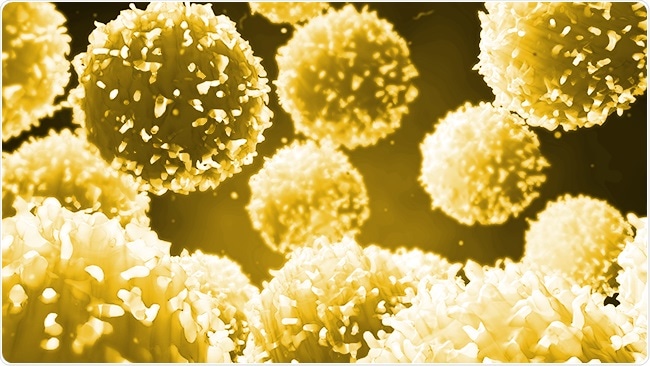Reviewed by Dan Hutchins, M.PhilJul 23 2021
A new study suggests that it is not possible to generate stable regulatory T cells without Vitamin C or enzymes called TET proteins.

Regulatory T cells (Tregs) help control inflammation and autoimmunity in the body. Image Credit: La Jolla Institute for Immunology.
The Regulatory T cells (Tregs) regulate autoimmunity and inflammation in the body. Tregs are so vital that researchers are striving to generate stable induced Tregs (iTregs) in vitro for use as treatments for autoimmune diseases and rejected organ transplantations. However, finding the right molecular ingredients to induce stable iTregs has been a difficult task.
Researchers at the La Jolla Institute for Immunology (LJI) and Emory University School of Medicine announced that Vitamin C and TET proteins can work together to provide Tregs their life-saving power.
Vitamin C can be used to stabilize iTregs generated in vitro. We hope that these kinds of induced Tregs can be used in the future for the treatment of autoimmune diseases and organ transplantation.”
Xiaojing Yue, PhD, Study Co-First Author and Instructor, La Jolla Institute for Immunology
The research, headed by LJI Professor Anjana Rao, PhD, and Emory Instructor Benjamin G Barwick, PhD, is based on the earlier discovery that Vitamin C can enhance the enzymatic activity of TET proteins and prompt the generation of stable iTregs under laboratory conditions.
Even though the discovery was encouraging, the researchers did not intend to work toward new autoimmune therapies without first analyzing the gene expression patterns and other key epigenetic features of the induced Tregs.
We wanted to study the entire system at a whole genome level using next generation sequencing technology to better understand the molecular features of these cells,” adds Yue.
Daniela Samaniego-Castruita, study co-first author and a graduate student at LJI, spearheaded the analysis of gene expression and epigenetic changes in the iTregs. A significant type of epigenetic modification involves the DNA itself through the addition or removal of molecules called methyl groups from cytosines, one of the four bases of DNA.
The methyl groups can be further oxidized by TET enzymes. These interactions could eventually change how cells “read” the DNA code.
An alternate type of epigenetic change involved the alteration of DNA accessibility: either DNA is loosely or tightly coiled. When the DNA coils unwind, regulatory regions become exposed, which subsequently influences gene expression.
During their analysis, the team discovered that TET proteins are required for maintaining the gene expression and epigenetic features that make Tregs what they are, and adding Vitamin C led to iTregs with similar gene expression and epigenetic features as normal “wild type” Tregs found in the body. The research also revealed an intriguing connection between TET enzymatic activity, Vitamin C, and IL-2/STAT5 signaling.
In mice that are deficient for components of IL-2/STAT5 signaling, such as IL-2, IL-2 receptors or STAT5, the Tregs cannot develop properly or they can have impaired function.”
Xiaojing Yue, PhD, Study Co-First Author and Instructor, La Jolla Institute for Immunology
The scientists demonstrated that while TET-deficiency in Treg cells leads to impaired IL-2/STAT5 signaling, at the same time, Vitamin C confers iTregs enhanced IL-2/STAT5 signaling by increasing the expression level of IL-2 receptor and the functional form of STAT5. STAT5 binds to essential regions in the genome, rendering these cells survive better in tough environments with low IL-2 supplementation.
We are looking for more small molecules to stabilize TET activity and generate induced Tregs that are even more stable. These induced Tregs could eventually be used to treat patients.”
Xiaojing Yue, PhD, Study Co-First Author and Instructor, La Jolla Institute for Immunology
“This research gives us a new way to think about treating autoimmune diseases,” adds Samaniego-Castruita.
Source:
Journal reference: